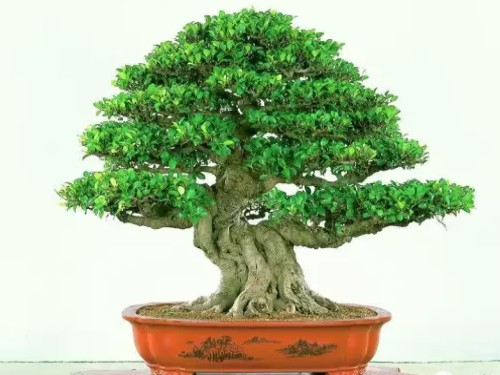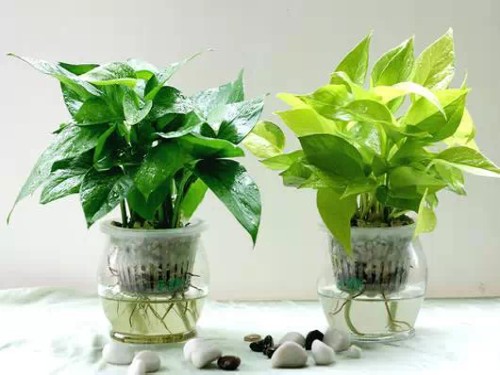How to turn the banyan bonsai to change the soil
Many trees turn the basin in the dormant period or growth retardation period, when the new roots of the trees have not yet grown, the new roots will not be touched when turning the basin, so as to avoid damaging the new roots and rotting them. After turning the basin, it is beneficial to the growth of new roots, and the new roots absorb nutrients from the newly replaced nutrient soil to promote the healthy growth of trees.
Turning the basin is an important measure to maintain bonsai. A small amount of potted soil can only provide a small space for GE Shusheng, which makes the roots dense, aging seriously and lack of vitality. If the soil does not turn the basin for a long time, the air permeability and water permeability will become worse, and the nutrients will be reduced, which will seriously affect the absorption of water and nutrients by new roots and root hairs. With the decrease of water and nutrients for the growth of branches and leaves, the leaves are easy to yellowing and thinning, and the branches are easy to wither. do not send new branches.

The banyan bonsai had better be turned once a year, generally not for more than 2 years. Turning the basin can improve the soil, and changing the soil can increase the fertility of the basin soil and provide sufficient nutrients for the growth of banyan trees.
When turning the basin, the thick and long roots and too many fibrous roots should be cut off. Shrunk shearing system. Reducing roots and improving root quality can promote the growth of new roots. The thin root can be proliferated at the cut, and the fine root can be thickened through the growth, which can increase the number of root plate, so that the tree appears to be strong. If the root grows well, the branches, stems and leaves of the stump can grow evenly in order to maintain a good tree shape.
Banyan bonsai trees grow in the basin for many years, the fibrous roots are covered with the bottom of the basin, watering is difficult to permeate and drain, and fertilizer is not easy to absorb, which will affect the normal growth of trees. Turn the basin can use the original basin or change a slightly larger basin, according to the size of the tree to decide. Changing soil can improve the ventilation and permeability of soil, increase soil nutrients, benefit the robust growth of bonsai trees and improve their ornamental effect.
The soil of the tree stump and banyan tree is mainly humus soil, paddy soil, mountain mud and so on. When changing the soil, some nutrients can be properly added to the soil to make it fermented and volatilized into late-acting nutrients in the soil, which can slowly benefit the tree stump. The grasp of the acidity and alkalinity of the soil depends on the specific conditions of the tree species. When changing the basin, generally fix the sieve or tile at the bottom hole, first add the soil with larger particles to facilitate drainage, then put it into the stump, fill it into the culture with finer particles, insert it tightly with bamboo and stick, and determine the amount of water according to the situation of the tree species.
The turning of the banyan bonsai can be decided according to the following aspects:
1. Generally, the small bonsai turns the basin every 1 to 2 years, the medium bonsai turns the basin every 2 years, and the large bonsai turns the basin every 5 years. If it is an old tree pile scene, it can be turned over every few years.
2. The tree species with exuberant growth and like fertilizer have more times of turning pots and shorter interval years, while those with slow growth and less fertilizer need less pots turning times and longer interval years. The old pile scene of pine and cypress should not be turned over more.
3. Tree species with luxuriant branches and leaves and well-developed roots should turn the pot frequently. Turning the basin can be determined by the growth of the roots. when the soil is not dry or wet, turn the basin upside down and beat the bottom of the basin with hands, so that all the trees with soil roots are poured out to check the soil block consolidation and root distribution. if the soil block is hardened and the root system is densely covered with the bottom of the soil block, it means that the basin must be turned over.
The banyan bonsai should be turned over to change the soil every two years. When changing the basin, the organic fertilizer will be crushed and matured according to a certain proportion, mixed into the basin to provide nutrition slowly. The best choice to change the basin is in the early spring or late autumn of the dormant period of the banyan tree (the time should be in April or May), and the roots that are too dense should be thinned at the same time.
Time: 2019-06-01 Click:
- Prev

What if the leaves of the iron tree bonsai turn yellow?
As the saying goes, the iron tree has blossomed. In fact, the cultivation of iron trees is very rare to blossom, generally only the trees that have been cultivated for 20 or 30 years will bloom, and the flowering period is from June to August. Although the iron tree rarely blossoms, its leaves are magnificent, so it is often raised as an excellent foliage plant.
- Next

How to raise green pineapple in hydroponic culture-the method of hydroponic green pineapple culture
Hydroponic plant is a new way of soilless cultivation of plants. Hydroponic plants like hydroponic green pineapple, which only existed in laboratories or enterprises before, have gradually entered thousands of households. How to raise hydroponic green pineapple? Compared with soil culture, the culture method of hydroponic green pineapple has a lot of details that need to be paid attention to.
Related
- Fuxing push coffee new agricultural production and marketing class: lack of small-scale processing plants
- Jujube rice field leisure farm deep ploughing Yilan for five years to create a space for organic food and play
- Nongyu Farm-A trial of organic papaya for brave women with advanced technology
- Four points for attention in the prevention and control of diseases and insect pests of edible fungi
- How to add nutrient solution to Edible Fungi
- Is there any good way to control edible fungus mites?
- Open Inoculation Technology of Edible Fungi
- Is there any clever way to use fertilizer for edible fungus in winter?
- What agents are used to kill the pathogens of edible fungi in the mushroom shed?
- Rapid drying of Edible Fungi

